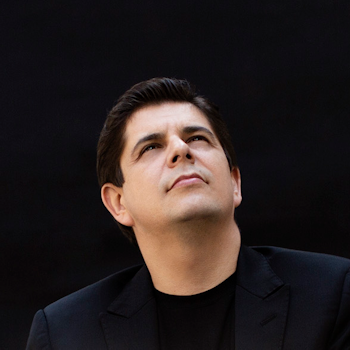At A Glance
RAVEL
Alborada del gracioso 1905/1918 | 8 mins
How do we account for the remarkable “Spanishness” of Frenchman Maurice Ravel? As Manuel de Falla noted, Ravel's Spain was one that “he felt in an idealized way through his mother. . . . She spoke fluent Spanish, [and] the years of her youth [were] spent in Madrid.” Ravel’s flirtation with the Spanish style persisted throughout his lifetime; Alborada del gracioso is just one of a number of his Spanish-flavored works. LISTEN FOR: This is a high-spirited piece, right from the guitar-like strumming we hear at its beginning. MORE
BARTÓK
Piano Concerto No. 3 1945 | 22 mins
Bartók was a superb pianist whose first and last compositions were for his own instrument—a waltz he wrote as a nine-year-old, and this concerto that he was writing for his wife as he lay dying at New York’s West Side Hospital. LISTEN FOR: The piece begins with the piano unwinding a ruminating melody. Bartók allows his fantasy to travel back to his native Hungary with unabashed nostalgia, including the first movement’s magical ending featuring a touching exchange between flute and piano. MORE
DEBUSSY
Ibéria from Images pour orchestre 1912 | 20 mins
With Ibéria, Debussy sings a love song on a grand scale to Spain. The first movement, Par les Rues et par les chemins (Along the Highways and Byways), begins with a crisp rhythm spelled out by woodwinds and castanets, which are ever-present in this musical picture. Against this, a clarinet unfolds an elegant and jaunty melody. But really this is a lazy afternoon, so the music evaporates. In his inventive Les Parfums de la nuit (Night Fragrances), Debussy caresses us with imagined scents of oleander and sweet chestnut, wild rose and thyme. “Slow and dreamy,” he writes. In Le Matin d’un jour de fête (Holiday Morning), Debussy shares his vision of happy chaos, of marchers and dancers, of a dance band (LOOK FOR: the violins and violas holding their instruments like guitars), of a country fiddler, of wind players blasting their raucously cheery tunes. The festivities get giddier, and in a blaze of orchestral color Ibéria comes to its joyous close. MORE
RAVEL
Boléro 1928 | 15 mins
Spanish flavor sometimes strikes a more mysterious tone for Ravel. He describes Boléro as “consisting wholly of orchestral texture . . . [it's] one long, very gradual crescendo.” He arranges this famous crescendo (a buildup of sound and volume) by having solo instruments play the melody, and then progresses to grouping instruments in novel ways. LISTEN FOR: Much of the effect of the crescendo lies with the snare drummer, who doggedly taps out the boléro rhythm from beginning to end. When the crescendo of sound is maxed out, Ravel makes a huge harmonic leap. The shock destroys the piece, which collapses in upon itself. MORE
JEANETTE YU is Editorial Director at the San Francisco Symphony.

